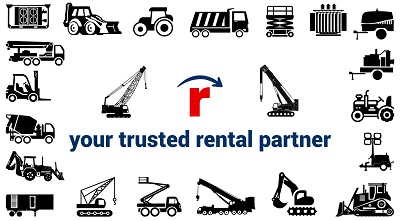Renting
- Temporary, short-term need for seasonal work or jobs outside your normal scope. (Daily, weekly, monthly)
- Try out various makes and models before purchasing.
- Replacement equipment during maintenance and repair of owned equipment.
- Grant or legal restrictions prohibiting purchase or lease of equipment.
- Ongoing access to the latest technology.
Leasing
- Easily affordable monthly rates. (24, 36, 48, 60 month options)
- Provides easy budgeting and cash flow management.
- Option to own the equipment at the end of the term.
- Many leases included maintenance and repair.
- Most leases offer tax benefits- but check with your tax professional for details.
You need equipment to get your work done. You’re trying to decide whether to rent your equipment or lease it. Since every organization has unique goals and is dealing with unique circumstances, there is no black and white answer. But, here are some benefits of each and some important questions to answer when choosing whether to rent or lease your equipment!
Answer these questions…
Q: How long do you need the equipment?
For many businesses and organizations the duration of the need is the primary determining factor in the rent or lease decision. Typically organizations and professionals will…
- Rent for short-term needs
Renting will usually carry a significantly higher monthly cost than leasing, but for short term needs, renting often minimizes overall equipment costs.
- Lease for long-term needs
Most leases offer a much lower monthly rate in exchange for a longer term commitment.
Q: Is this contract work for a client?
While not appropriate for all situations, in many industries, passing along equipment rental costs to the end client is a common and accepted practice. But, they’re probably not going to pay for you to lease the equipment. If your client will pay for equipment rental—then renting is most certainly the best option.
Q: How are equipment soft costs handled?
Be sure to understand how soft costs like shipping, training and equipment servicing are accounted for in the lease and rental contracts. Frequently, soft costs for leases are built into the lease payments and amortized over the life the of the lease, while rental soft costs are often charged separately. Either way, be clear about who is responsible for servicing or repairing the equipment.
Q: What happens at the end of the term?
Most rental businesses make it very easy to extend the length of your rental and once your project is complete, you simply return the equipment. Most leases end with either a simple buy-out program that allows you to own the equipment at the end of the lease, or the option to return the equipment. Decide which option is best for your business.

